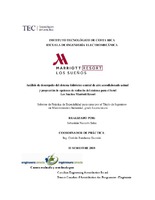Análisis de desempeño del sistema hidrónico central de aire acondicionado actual y proyección de opciones de rediseño del sistema para el hotel Los Sueños Marriott Resort
Resumen
All electromechanical installation has a limit of useful life. Hydronic air conditioning system is not exempt from this condition. As the system approaches its limit of useful life, its performance decreases considerably. Analyze the performance of an air conditioning system, provide justifications and criteria on the decisions you want to make on the system, such as replacing components or redesigning it. The literature of the Institute of Air Conditioning, Heating and Refrigeration (AHRI), establishes many standards, indicators and / or procedures that allow to analyze the performance of an air conditioning system.
According to the AHRI certification of installed chillers, the IPLV of these units is 0.562 kW / TonR. A practical NPLV was determined, it is considered that the equipment is out of standard conditions because it was not possible to manually configure the chillers to standard conditions, which according to AHRI correspond to an exit temperature of the water of the evaporator of 44 ˚F (6,667 ˚C ) and a water inlet temperature in the condenser of 85 ˚F (29.44˚C). It was concluded that the performance of the chillers is inefficient and that the average consumption weighted in electric power per ton of refrigeration generated exceeds 173% for the chiller with better performance.
The necessary information for the development of the project (outdated system plans, thermal load study carried out by Termo Aire S.A., records of terminal units, among others) was collected. After recognizing system plans, locating the terminal units and comparing the installed capacity of the units against that required according to the thermal load study, the condition and action to be carried out is determined.
Contemplating the increase of thermal load by planned constructions, replacement of units and by the incorporation of new systems, in total it is estimated a requirement of 1050 tons of refrigeration to be provided by the central hydronic system.
Given the great magnitude of the project, details about rates of return or investment benefits, were not given because in the design phase many assumptions were made, or not all the components that intervene in the final cost of the installation were determined (as the design of airducts). Approximate estimates of the different alternatives are presented with their benefits and, to provide the owner of the facility with the opportunity to choose the alternative design that best suits their interests.
Descripción
Proyecto de Graduación (Licenciatura en Mantenimiento Industrial) Instituto Tecnológico de Costa Rica, Escuela de Ingeniería Electromecánica, 2018.


